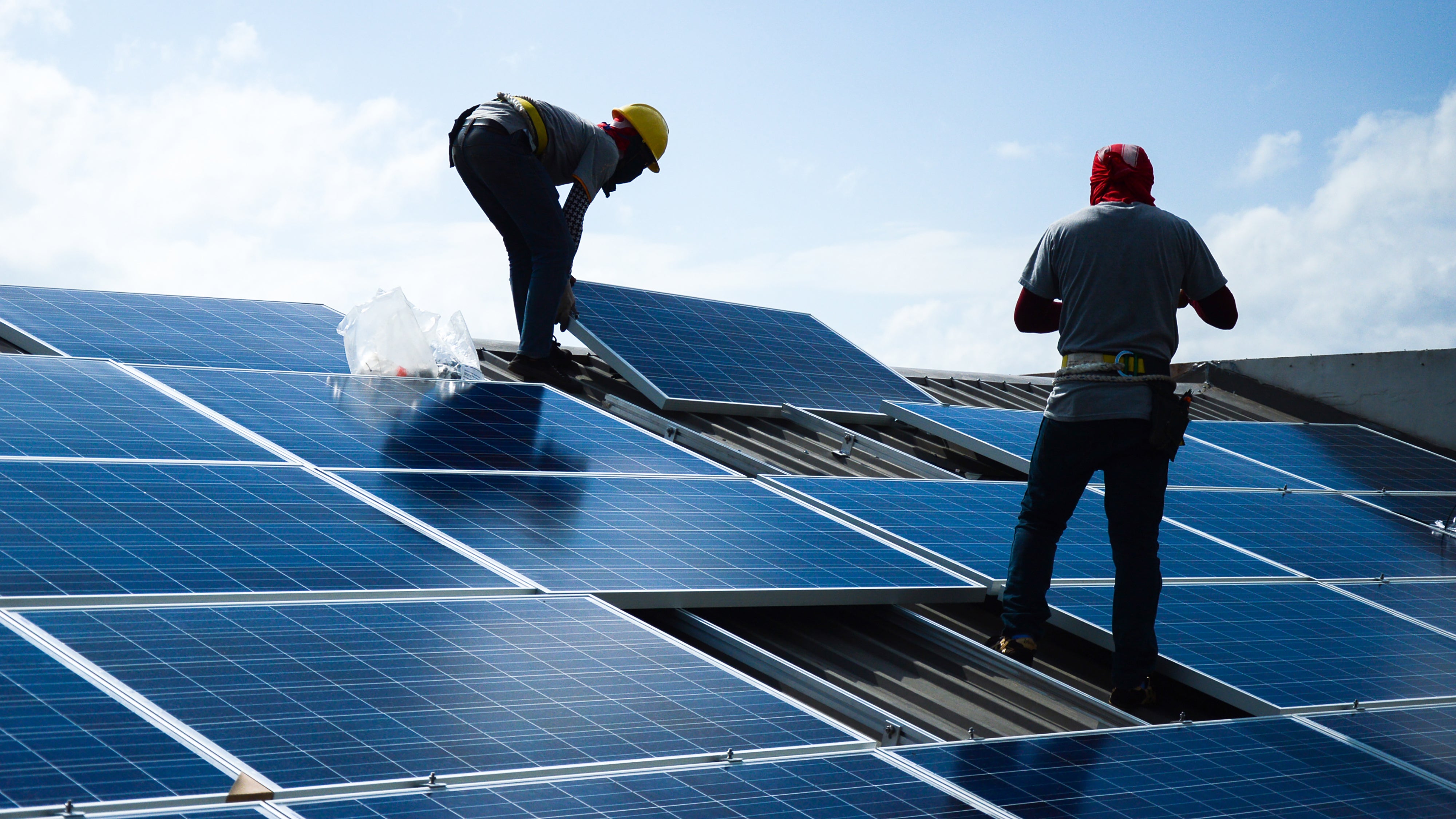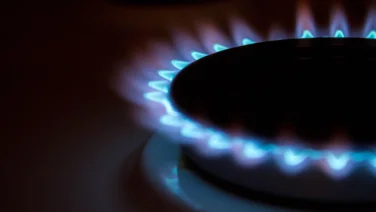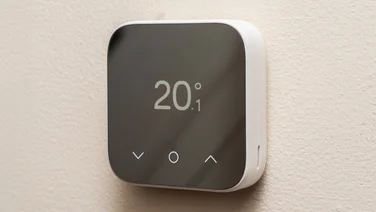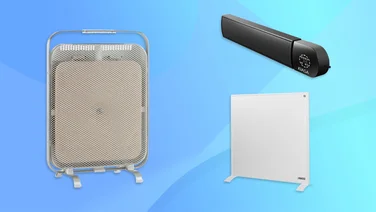To help us provide you with free impartial advice, we may earn a commission if you buy through links on our site. Learn more

Solar panels can shrink your energy bills and carbon footprint by providing nearly all the electricity you need. But a solar PV installation isn’t one size fits all. How many solar panels will you need to cover your energy usage – and are your roof and budget big enough to accommodate them?
For households of all sizes, solar panels are a wiser investment than ever. Amid rising energy bills and falling panel costs, solar installations shot up by 80% in the past year alone, with around 2 million UK homes reportedly planning to follow suit in the next year. Solar providers say the average amount of roof space required is 20m², which equates to 10 panels costing around a total of £6,000. However, many households need far fewer panels than that.
In this article we’ll help you calculate the ideal number of solar panels for your home, depending on factors including your energy consumption and roof size. If you’re limited in the number of panels you can buy, we’ll also offer tips on getting the maximum electricity yield from them.
Get a free solar panel quote today
Find out how much solar panel installation could cost you by taking our quick survey below.
How many solar panels does the average UK house need?
The average 3.5kWp (kilowatts peak) solar PV system in the UK comprises 10 standard 350W panels, each of which measures 1m x 2m (2m²), with this average installation taking up 20m² of roof space (about 4m x 5m).
Given a sunny south-facing spot in typical UK conditions, that 10-panel array will produce around 2,645kWh (kilowatt hours) of energy per year. That, according to Ofgem, is nearly enough to cover the 2,900kWh of electricity used by the typical British household in a year. In other words, the average 10-panel installation will be sufficient to cover all the electricity needs of the average household.
If your home is smaller or larger than average, and your electricity needs are relatively smaller or greater, then the number of panels you need will be lower or higher. Here’s a rough guide:
| House size | Solar panels needed | Roof space needed | Average annual output |
| 1-2 bed | 6 | 12 m² | 1,600 kWh |
| 3 bed | 10 | 20 m² | 2,650 kWh |
| 4-5 bed | 14 | 28 m² | 3,700 kWh |
That’s a simplification, however. Your electricity needs are dictated by more than just the size of your roof and the number of bedrooms in your house. A 1-bedroom bungalow may need more solar panels to power its heating than a 2-bedroom mid-terrace house.
A specialist installer will be able to take these factors into account when creating a quote that sets out how many solar panels you need.
How do I work out how many solar panels I need?
First, calculate how much electricity you want your panels to provide. Again, this is down to much more than just the size of your home. You will need more solar panels if your electricity needs are high (say, your whole family works from home), or if your house isn’t well insulated.
Your energy bills or provider can tell you exactly how much electricity you consumed last year, measured in kWh. Alternatively, get an estimate of your annual usage by using a free online calculator that takes into account your thermostats, insulation, electrical appliances and more. Then, compare that figure with the average energy output rates of different-sized systems in the table above.
When translating your energy needs into solar panel numbers, remember that a typical 350W solar panel produces around 265kWh per year in the UK. So if you use 2,650kWh of electricity annually, you can theoretically provide it all with 10 solar panels. If you only use 1,500kWh or less, then a six-panel array will be sufficient for your needs.
READ NEXT: The best solar panels to buy

How many solar panels do I need on a north-facing roof?
The size and direction of your roof is the next biggest factor when determining the number of solar panels you need. As we explained in our article on the best direction for solar panels, in the UK a south-facing solar array produces around double the energy of a north-facing solar array. So a north-facing roof needs significantly more panels than a south-facing one.
Roof direction is such a key factor that some solar providers are reluctant to install panels on north-facing roofs in the UK. But solar panel technology is improving fast, and smaller, high-efficiency panels have been developed for shaded areas and north-facing roofs. You will need to pay more for them, however.
How much does one solar panel cost?
Solar panels are sourced for as little as £400 each, but solar PV systems aren’t charged per panel. Your quote includes specialist installation, scaffolding, electrical work, and an inverter to turn the sun’s energy into domestic electricity.
The more panels you want, the less you’re likely to pay per standard 2 x 1m panel. For a starter system of six panels of around 400W each, EON currently charges £5,995 and EDF charges £6,050. For eight panels, EDF charges £7,250. However, these prices are just a guide: your exact quote, from any supplier, will depend on the results of a survey.
READ NEXT: Are solar panels worth it?

Small, higher-efficiency panels cost more than standard panels. But if your home doesn’t suit standard panels, specialist panels will still pay off in the long term by dramatically reducing your energy bills. Again, a specialist surveyor will be able to offer advice.
How many solar panels do I need to go off-grid?
Solar PV panels themselves won’t take you off-grid, no matter how many of them you buy. Unless you have a battery to store electricity, you will still be connected to the national grid to import and export electricity.
In dark and cold months, your panels are unlikely to deliver all the electricity you need, so your energy provider will automatically top you up with electricity imported from the grid. On long, bright summer days, you’re very unlikley to use all the electricity your sun-drenched panels are producing, so it will be exported to the grid for other people to use.
If you want to store that excess energy, you will need to invest in a battery for your solar panel system. These cost around £2,000-£4,000 and can be installed at the same time as your solar panels, or later on. If you have enough panels to produce all the electricity your home needs all year, then a battery can potentially take you off-grid and make you self-sufficient.
Be aware that solar PV system batteries are currently in short supply. Companies including EON have stopped providing them until supply issues are rectified. They’re not impossible to find, but you may not be able to get a battery from your chosen panel provider.






